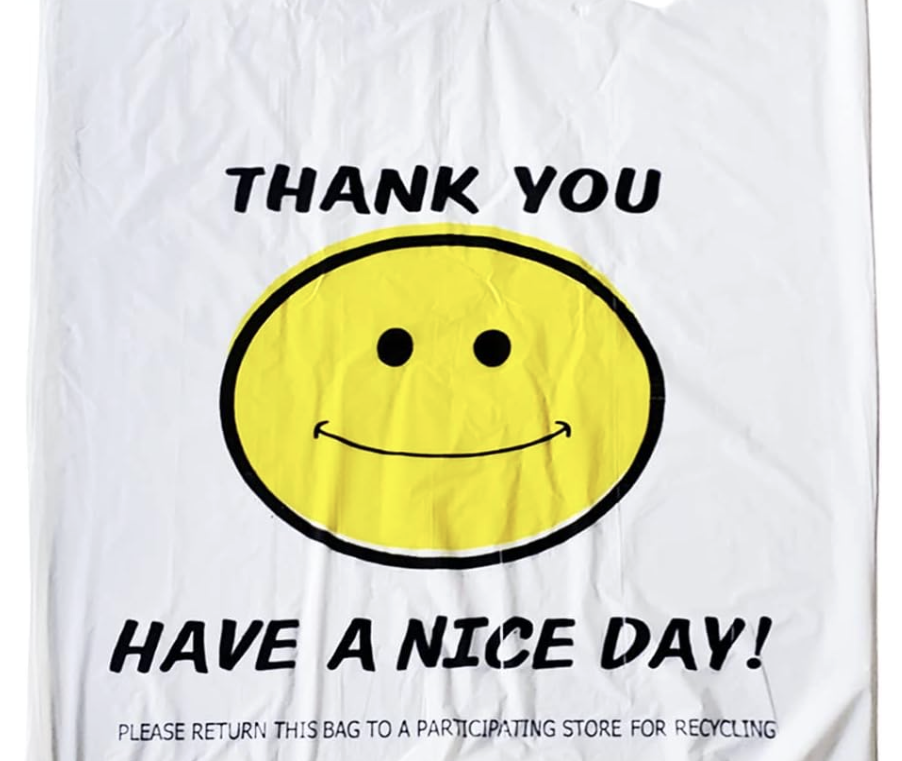For an alternate viewpoint, see “Point: Why We Should Ban Single-Use Plastics.”
Nobody wants plastic pollution. That doesn’t mean poorly considered and heavy-handed governmental actions are the solution. This includes misguided single-use plastic bans (e.g., bans on plastic straws and single-use plastic bags).
The primary concern regarding plastic pollution is ocean plastic pollution. Plastic in our oceans can persist indefinitely, causing harm to marine life. Further, the amount of plastic in the ocean is increasing.
To what extent do American consumers contribute to this problem? According to the nonprofit OpenOceans Global, “The U.S. directly contributes less than 1 percent of plastic to the world’s oceans.” The problem is primarily coming from Asia, which accounts for more than 80 percent of the ocean plastic.
There is a zone of accumulated plastic known as the Great Pacific Global Patch that has received significant attention. The nonprofit Ocean Cleanup has estimated that half of the mass was discarded fishing gear. A recent study in Scientific Reports states that “between 75 and 86 percent of the floating plastic mass” in the Patch “could be considered (abandoned, lost or otherwise discarded fishing gear).”
Quite simply, American consumers are not a meaningful source of this pollution problem. Not only does our country contribute a minuscule amount to ocean plastic pollution, but much of the ocean plastic pollution also has nothing to do with consumer use of plastic.
Producing a significant amount of plastic waste doesn’t mean a country is a major contributor to plastic pollution in the ocean. Mismanaged waste is a primary contributor to ocean plastic pollution.
Wealthier countries, such as the United States, which have significant plastic consumption, do not have waste management problems like those that plague nations where the ocean plastic pollution is coming from. According to the World Population Review’s analysis of plastic pollution, the United States is one of the best countries in the world at managing plastic waste.
Less developed nations, which are significant sources of ocean plastic pollution, need to focus on improving their waste management systems. As countries develop economically, this should improve their waste management practices.
The tiny role U.S. consumers have in ocean plastic pollution by itself is a compelling reason to reject single-use plastic bans. Similarly, our country’s continued commitment to reducing litter, which is evident in a 54 percent reduction in roadside litter over the past decade, as discussed in the Keep America Beautiful 2020 National Litter Study.
There are many other compelling reasons to reject single-use plastic bans.
Reusable bags, unlike plastic bags, pose a potential source of significant health risks due to the presence of harmful bacteria. One study found that after San Francisco’s 2007 ban on plastic use, there was a spike in emergency room visits due to food contamination, with subsequent California municipal bans seeing similar increases.
In many ways, plastic bags are more environmentally friendly than paper bags. Producing a plastic bag consumes significantly less energy and water than making a paper bag, and it emits less air pollution.
These bans can also hit Americans in their wallets. Plastic bags and straws are less expensive than their paper counterparts. If the costs to businesses increase, then this will likely be passed on to consumers.
Then there’s convenience and quality. Plastic bags are lightweight, flexible and easy to transport. This is understandably appealing to many consumers.
Consumers overwhelmingly prefer plastic straws over paper straws, which often become soggy before even finishing a drink. For many disabled Americans, plastic straws are critical because they are bendable and don’t pose health and safety risks for them that can arise with glass, paper, and metal straws.
And make no mistake, single-use plastic bans are the start of more ambitious efforts to dictate consumer choices. California is prohibiting many stores from offering any plastic bags (single-use or reusable) at checkout. Paper bags are also in the state’s sights as stores must charge customers for recycled paper bags, and in a couple of years, they will be able to offer only paper bags with a higher percentage of recycled content.
The key point is that consumers should be able to decide for themselves what kind of bags or straws to use, not the government and ideologues who want to impose their preferences on everyone else.
This is especially true when the benefits of single-use plastic bans are questionable at best and the costs are very real.


